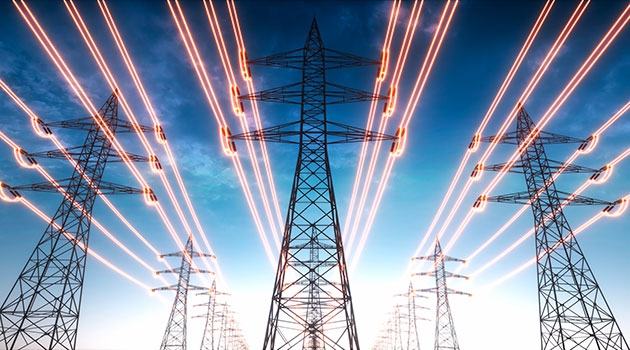The energy crisis may lead to greater efficiency
Column
The energy crisis has the potential to spawn more active and flexible electricity consumers and thus a more efficient electricity market and use of the grid. That said, there are factors that may counter this positive development. So writes Cajsa Bartusch Kätting, researcher and leader of USER - Uppsala Smart Energy Research Group.
Department of Civil and Industrial Engineering.
Photo: Mikael Wallerstedt
Although Sweden generates an annual surplus of electricity, there are periods of energy shortfall, especially during cold spells in the winter months, when the country becomes an energy importer. The war in Ukraine has had a negative impact on electricity supplies, increasing the risk of disconnection from the national grid. It has also driven up electricity prices in Sweden and other countries within the European energy market.
This worrying development is not however without a silver lining. It is also increasing awareness among consumers that changing patterns of electricity use and reducing consumption overall can lead to lower bills and reduce climate impact. Another positive effect is the increased interest in investing in products and services designed to increase energy efficiency. From this perspective, the energy crisis has the potential to achieve something useful; i.e., more active and flexible electricity consumers and thus a more efficient electricity market and use of the grid. That said, there are factors that may counter this positive development.
The transition to a fossil-free energy system demands greater use of renewable electricity; however, this is limited by the existing capacity of the grid and at the production stage, something that threatens to slow societal development. Expansion is cost-intensive, time-consuming and often comes at the cost of negative environmental impact. In light of this, the burden of hope falls on the electricity consumer who, by saving electricity and “flattening the curve”, as national grid operator Svenska Kraftnät puts it, can play an important role in solving this societal problem.
Given that the margin between peak demand and grid capacity is decreasing, many network owners have chosen to introduce time-of-use tariffs that incentivise consumers to move their electricity use from peak to off-peak times, or to even out consumption over time, thus cutting the peaks.
High electricity prices and the expectation of further rises during the winter has created concern and increased interest among electricity consumers in moving to an hourly-price contract with their electricity supplier. Under the terms of these contracts, the price of electricity follows the market price hour by hour, meaning that the consumer can reduce their bills by moving their electricity consumption from peak to off-peak hours.
Neither time-of-use tariffs nor hourly-price contracts are new but few households have taken advantage of the opportunity to sign this type of contract and the number of network owners who have implemented such tariffs is limited, even if it is increasing. It is only now, as a result of rising electricity prices, that electricity consumers have noticed that electricity suppliers and network owners are sending mixed signals about prices that under certain circumstances limit opportunities to reduce electricity bills by changing patterns of consumption.
When consumers move electricity consumption to off-peak periods to reduce bills, they may create new peaks that cause network charges to increase. When this happens, it clearly does not promote the behavioural changes that the electrical energy system so desperately needs; not only that, but it also risks undermining trust in the industry and regulatory authority among consumers.
Proposed state subsidies to electricity consumers may also serve to disincentivise consumers from becoming part of the solution to the energy crisis. Naturally, we should not have an electricity market that forces people from their homes but, given the climate crisis, nor is it reasonable to undermine the very price mechanisms that encourage demand response and energy efficiency and make it profitable to invest in smart products and services. So, it is important that we design any state subsidies in a manner that does not disrupt pricing based on supply and demand.
Considering the catastrophic consequences of climate change for humanity and the planet on which we live, it is remarkable that politicians have not been clearer concerning the unavoidable need for us to change our consumption-oriented lifestyles in many regards, so that we can cope with the inevitable crisis. This applies not least to energy consumption.
As a direct response to the European Commission’s new package of measures to mitigate the impact of the energy crisis, the Swedish Energy Agency has launched an information campaign to reduce electricity consumption in general and peak-time consumption in particular. Both Svenska Kraftnät and the Energy Markets Inspectorate have also recently ramped up their information initiatives. All in all, this bodes well for increased awareness and thus a positive development towards a more sustainable energy system, not least from a climate perspective.
Cajsa Bartusch Kätting, Associate Professor at the Department of Civil and Industrial Engineering and leader of USER - Uppsala Smart Energy Research Group

